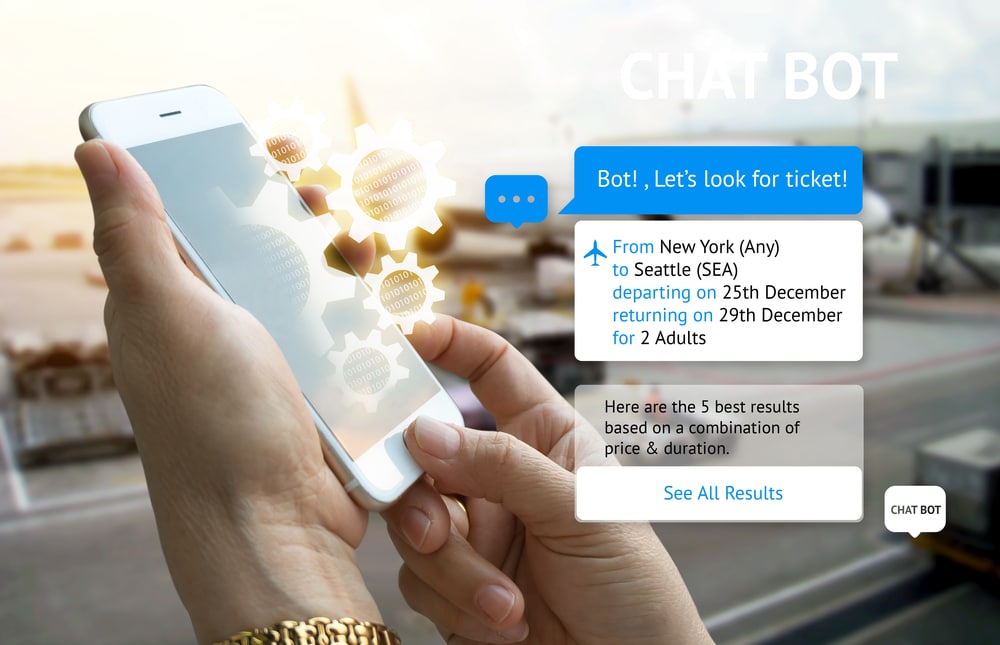What will customer service look like in 2025?
With so many new digital channels and tools emerging, plus how dramatically Covid-19 changed the way we work, it’s inevitable that our customer service expectations have changed too.
But how will these trends affect the future of customer service?
What might the customer experience look like in 2025?
Here are our predictions!
Customer service becomes proactive, instead of reactive
Today, it’s up to the customer to reach out after something goes wrong. In the future, it may be possible for support teams to predict where the customer might have an issue, and step in before they even know they need help.
While it might sound a bit like magic, it’s all about predictive analytics. Already, companies like FedEx use it in churn modelling – predicting which customers are at risk of leaving the company and how they can win them back.
To give a hypothetical example, imagine a customer has been browsing a particular product on your website. They then briefly visit the FAQ page, only to abandon the website. Clearly, they didn’t find the information they were looking for.
Used correctly, this kind of data can be leveraged to better assist them (and other potential customers) in future. For instance, if a live chat window were to appear at this point in their journey with an offer to assist, you have a better chance of closing the sale next time.
Having this information at their fingertips may give customer service reps insight superpowers when it comes to assessing what the client needs!
Language barriers start to dissolve
Providing multilingual customer support has always been a challenge for brands with an international footprint, especially smaller businesses that don’t have regional offices.
As an example, imagine a small online store with a few offices in the UK that partners with a global logistics company to deliver their products almost anywhere in the world. That’s all fine, until a customer in Italy or Brazil needs support!
Once again, technology is helping to overcome these obstacles. Google just recently announced the arrival of live translation captions in Meet, and Microsoft Translator now covers over 100 different languages.
By 2025, we think tools like these will become an integral part of customer service, allowing companies to communicate effortlessly with customers around the world.
Human reps team up with machines
The reality is that most customer service agents spend 90% of their time answering the same questions over and over again. In these instances, having customers assisted by AI or a bot instead makes sense for a number of reasons.
It’s a lot cheaper, can run 24/7/365, and it leaves your human agents available to assist with more complex queries a chatbot couldn’t cope with. With AI and self-service options available for simple queries, and a real human just a click away when you need them, customers will be assisted better and faster than ever before.
Video support
With the remote work explosion, people have become a lot more comfortable with video conferencing – and the technology has never been better. For CS staff, being able to see the customer has a number of advantages – they can read their facial expression and body language, and the customer could physically show them what the problem is. We suspect this functionality to start showing up more and more alongside with self-service and omnichannel support.
The customer chooses their own support journey
As individuals, we all like to do things our own way – especially when it comes to communication. Someone looking for an urgent solution may want to pick up the phone, whereas someone busy at work may prefer to open a support ticket and wait for an email response they can look at later.
By 2025, we anticipate that customers will expect any businesses they deal with to have a range of communication channels for them to choose from, and the ability to mix and match solutions, including:
- Speak to a person “face-to-face” on video or over the phone
- Ask the community / self-service
- Live chat
- Open a support ticket / send us an email
- Search the knowledge base (with assistance from AI)
- Have us call you back
- Reach out on social media
The end of call centres?
While the trend in remote work was already growing, Covid-19 kicked it firmly into hyper speed! Businesses have also found that having employees in different locations can have unexpected benefits.
For support centres, having staff in different time zones can be massively advantageous in an increasingly globalised world. And thanks to cloud-based software, support agents don’t even need particularly advanced computers or laptops to assist customers.
We predict that by 2025, a significant proportion of online customer service staff will work from home, using technology to keep in touch with their teams and leadership.
Digital Customer Care Company’s predictions for customer service in 2025
- CS becomes proactive, rather than reactive
- Language barriers start to disappear altogether
- Humans partner with AI for unprecedented levels of support
- Call centres give way to remote workforces
- Video chat becomes a standard feature alongside live text chat
- Customers can choose and customise their own support journey



